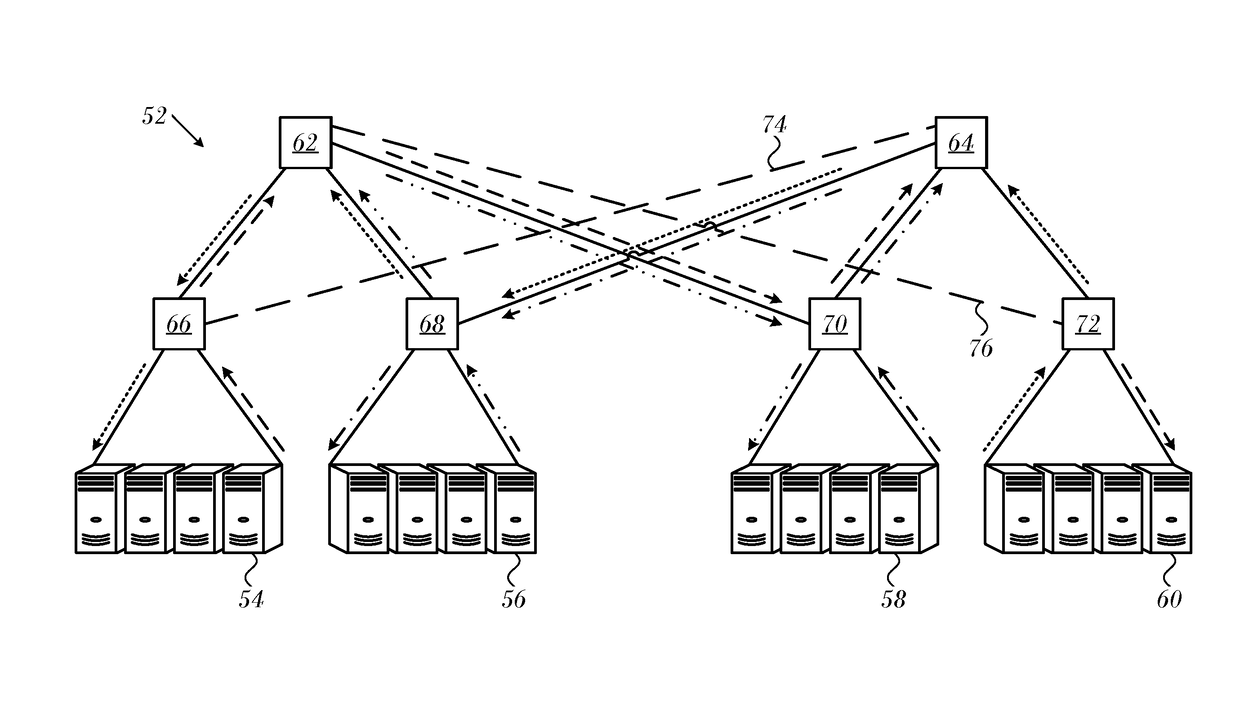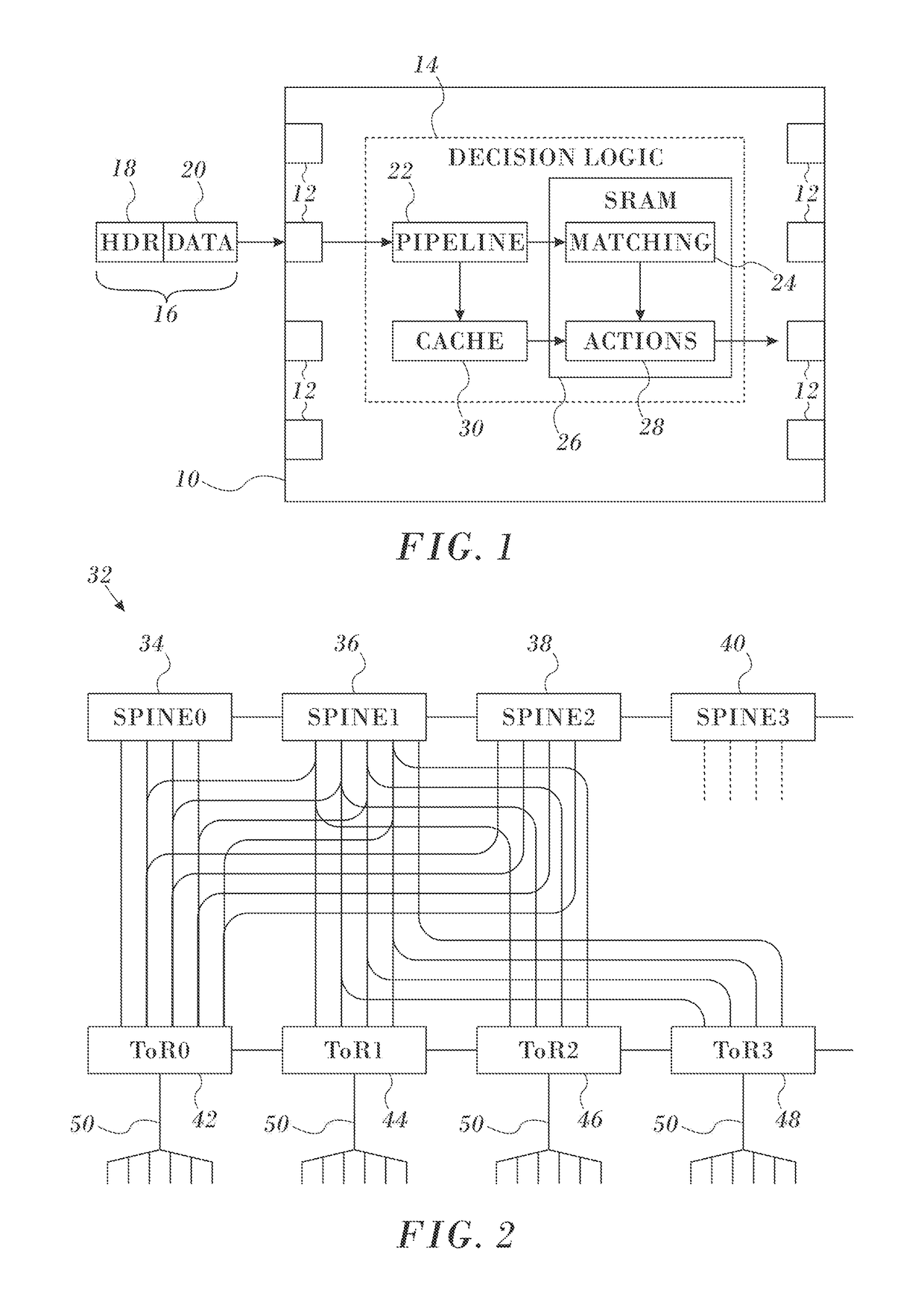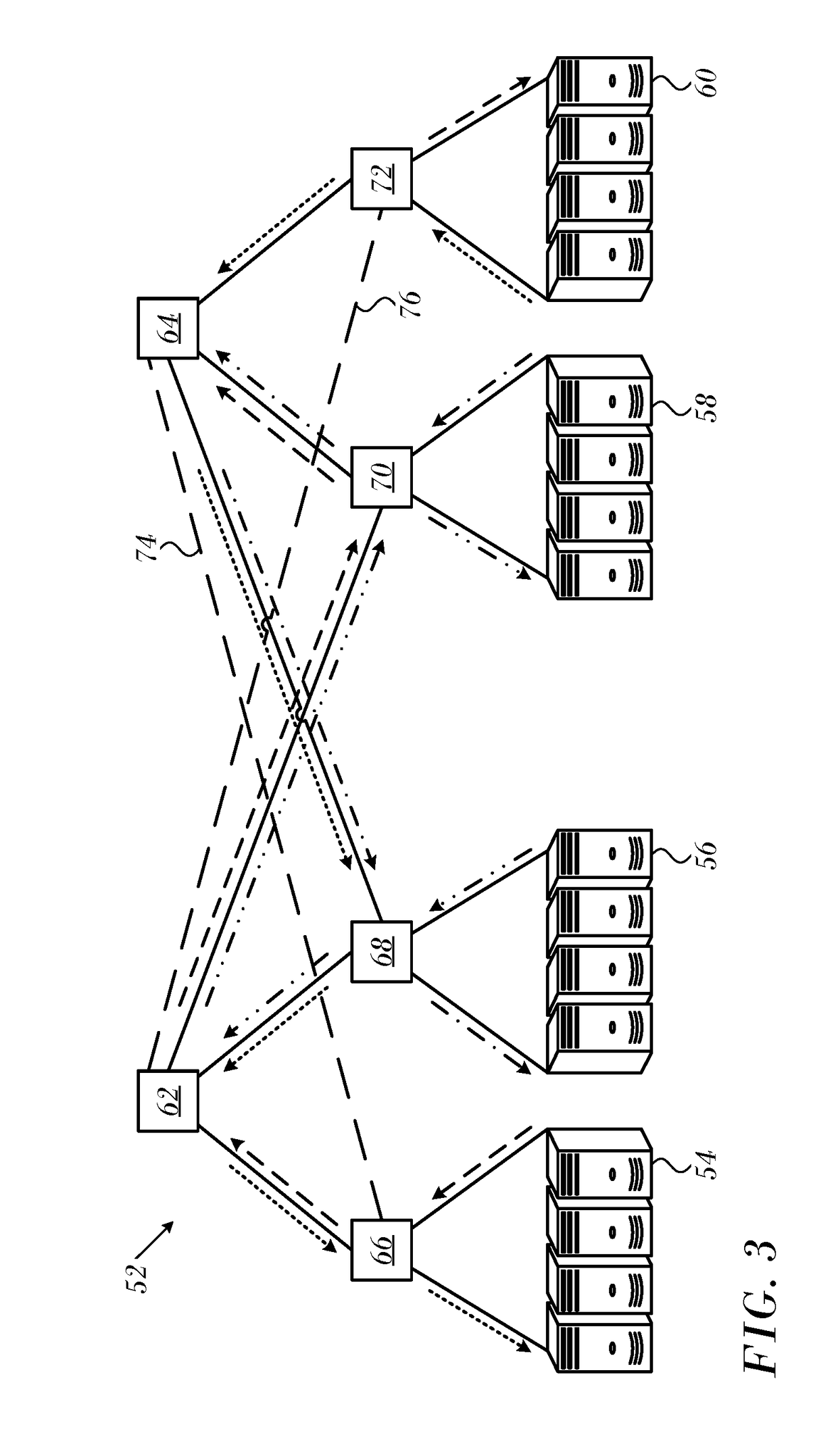Credit Loop Deadlock Detection and Recovery in Arbitrary Topology Networks
- Summary
- Abstract
- Description
- Claims
- Application Information
AI Technical Summary
Benefits of technology
Problems solved by technology
Method used
Image
Examples
example 1
ker Algorithm
[0101]The Loop Breaker algorithm algorithms was implemented and evaluated using a Soft-ware Development Kit (SDK) of the Mellanox Spectrum™ Ethernet switch. The SDK allows access to egress queue length and the outgoing bandwidth samples. These values are monitored to determine if the egress port is suspected to be blocked.
[0102]In parallel, a flow monitoring process stores the ingress and egress ports for recent flows that are transmitted through the switch. Each flow is identified by a 5-tuple (source, destination IP addresses, source and destination layer ports and layer 4 protocol), which fields that are used by the ECMP hashing function. A preferable alternative implementation is to rely on an elephant flows detection mechanism if it is available in the switch hardware.
[0103]As described above, when a new deadlock-suspected port is detected, a new CLCM packet with a random SPUID is created and sent by the switch CPU. The switch is also configured to trap incoming CL...
example 2
Breaker
[0110]Reference is now made to FIG. 11, which is a diagram of a 3-level fat-tree 202 in which the Deadlock Breaker algorithm was simulated in accordance with an embodiment of the invention. In this Example, the Deadlock Breaker algorithm was implemented in a network simulator and tested on the network presented in FIG. 11. Wiring mistakes, indicated by dashed lines 204, makes this fat-tree prone to credit loops, even when routed with a minimal hop routing algorithm. To cause a deadlock we introduced nine flows: flows 9 ! 15; 13 ! 32; 30 ! 17 form the credit loop; and flows 14 ! 15; 16 ! 15; 18 ! 17; 20 ! 17; 29 ! 32; 31 ! 32 create the backpressure required to fill up the buffers of switches participating in the credit loop. We simulated the network with and without the Deadlock Breaker algorithm and measured the output bandwidth of the flows on the credit loop.
[0111]Reference is now made to FIG. 12, which is a set of graphical plots of a simulation of the scenario shown in F...
PUM
 Login to View More
Login to View More Abstract
Description
Claims
Application Information
 Login to View More
Login to View More - R&D
- Intellectual Property
- Life Sciences
- Materials
- Tech Scout
- Unparalleled Data Quality
- Higher Quality Content
- 60% Fewer Hallucinations
Browse by: Latest US Patents, China's latest patents, Technical Efficacy Thesaurus, Application Domain, Technology Topic, Popular Technical Reports.
© 2025 PatSnap. All rights reserved.Legal|Privacy policy|Modern Slavery Act Transparency Statement|Sitemap|About US| Contact US: help@patsnap.com



